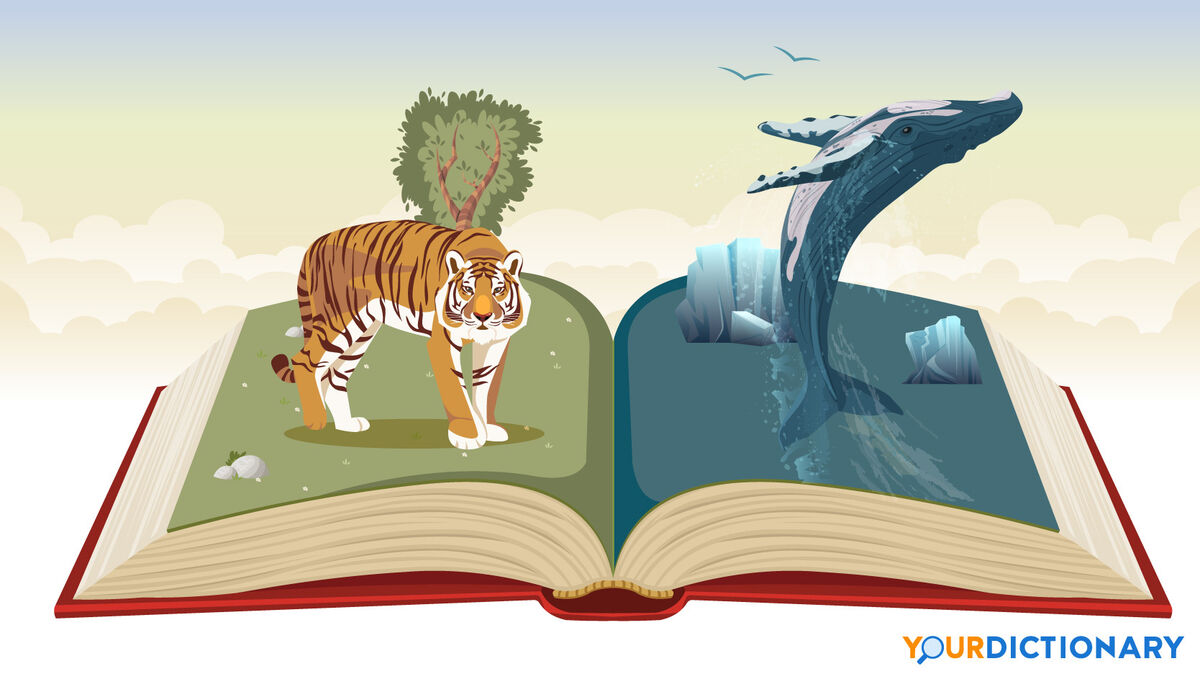
Art is often a reflection of something else: the world around us, the world that will be or the world as it was in the past. Sometimes art represents all these at once. One way literature, in particular, conveys this to an audience is through allegory.
What Is Allegory?
An allegory is a poem, story or image where the characters and events are symbolic and represent a greater meaning or truth, particularly a religious, moral or political idea. The purpose of an allegory is to teach an idea or principle or to explain it. Allegory is derived from the Old French allegorie from the Latin and Greek allegoria, which means "speaking about something else."
Allegory Examples in Literature
Allegorical literature has experienced popularity over many centuries. Some of the most prominent books of allegory include:
- Pilgrim's Progress by John Bunyan
- Moby Dick by Herman Melville
- Animal Farm by George Orwell
- Life of Pi by Yann Martel
Pilgrim's Progress by John Bunyan
Pilgrim's Progress is likely the most famous piece of allegorical English literature. It was written by John Bunyan, a preacher intending to spread the word of Protestant doctrine, particularly the concept of what is necessary in order to achieve salvation. The book contains a myriad of representations.
- The characters are clearly representative of people and concepts that Bunyan implies without naming them more explicitly. Bunyan's treatment of the characters in the text is used metaphorically to convey his opinion regarding those who are "sinners" or "fools" and to impress the importance of that viewpoint on the reader.
- The first place in the novel in which Bunyan metaphorically reveals the importance of these concepts is through the fact that the main character's journey toward salvation requires him to turn his back on friends and family.
- In a lecture at Vancouver Island University, Ian Johnston stated that the characters in the work present clear doctrines. In fact, he asserts that each character is the personification of explicit characteristics that are intended to illustrate a clear point. Johnston goes on to say that an individual's spiritual journey is the only thing that matters. Something as basic as charity gets replaced by introspection and self-imposed spiritual flagellation.
Moby Dick by Herman Melville
Moby Dick uses allegory on many different levels.
- The Pequod's journey mirrors the one the U.S. took before the Civil War. The story is a reflection of Melville's feelings about America in the time leading up to the war.
- The conflict that occurs between Ahab and the whale is a metaphor for the relationship that man has with God.
- Ahab's struggles are a metaphor for the struggles all men go through when they are attempting to achieve major dreams or monumental life goals.
- Moby Dick may also be a metaphor for the idea that revenge can become a self-destructive obsession.
These are just some of the ways in which this work may be seen as an allegory. Different readers over time have read different meanings into the book, which shows the level of depth that Melville managed to include in his work.
Animal Farm by George Orwell
Animal Farm is an allegory example that uses animals on a farm to represent the overthrow of Tsar Nicholas II, the actions of Stalin, and the revolution in Russia before World War II. The struggles of the animals on the farm may be seen as a metaphor for:
- How greed and indifference corrupt revolution
- The dangers that can occur without a smooth transition to a people's government
- The way in which those in power positions can manipulate the ideologies of society
Literary critics and historians have linked each of the characters to central players in the Russian revolution and/or the second world war.
- Mr. Jones represents Nicholas II.
- Napoleon represents Joseph Stalin.
- Snowball is a manifestation of Leon Trotsky.
- Old Major plays the role of Vladimir Lenin.
- Mr. Frederick stands for Adolf Hitler.
In a more general sense, Boxer stands for the working class, while Squealer represents communist propaganda. The doctrine of "animalism" in the book represents real-life communism, allowing Orwell to make clear his position on the political situation in Russia through the use of metaphor and allegory.
Life of Pi by Yann Martel
In Life of Pi, the main character is a child who’s stuck on a boat with a tiger. At first, he doesn’t realize the tiger’s there because it’s under a tarp. As soon as he becomes aware of the tiger, he tries to get away from it. In the end, the two develop a tight bond.
The allegory is woven throughout the novel and it’s meant to mirror a relationship with God. The author, Yann Martel, would argue that we don’t always realize God is present. When we do, we often try to escape Him by living according to our own will. But, in the end, a life lived in union with God is a happier one.
Literary Devices Enhance Literature
Allegories often work hand in hand with rhetorical devices. Familiarize yourself with some commonly used literary devices.